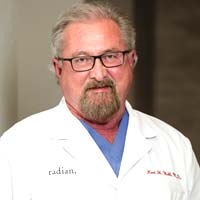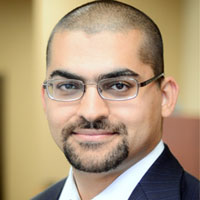Danish Hair Loss Treatment Combining FUE and Density Improvement Program Comes to Tampa
Haarklinikken,
a Danish hair loss treatment provider, which specializes in the
research and treatment of hair and scalp disorders, announced the launch
of its unique European hair replacement technology in Tampa, Florida.
The
treatment, new in America, helps patients in the United States find
solutions to their daunting problems of hair loss. According to
Haarklinikken, the treatment has been highly successful in more than 40
thousand satisfied clients in Denmark, Germany and Norway.
Haarklinikken’s
patented technology, the company claims, is truly the future of hair
replacement. The service includes Haarklinikken’s renowned Density
Improvement Program (DIP), previously unavailable in America. The DIP
program combines formulated therapy treatments with Follicular Unit
Extraction (FUE) Hair Transplantation.
FUE is a popular hair
transplant surgery in North America. Haarklinikken’s procedure provides
hair restoration through FUE, revitalizes the remaining hair to a
healthy state, and maintains the entire hair. The treatment is a
complete hair restoration package for patients suffering from alopecia
or any other forms of baldness.
The DIP program focuses on
creating a personalized hair restoration regimen using specifically
tailored extract products and hand-crafted herbal solutions, as well as
shampoos and styling products. These products are developed as a result
of more than 50 years of clinical research and adopted according to a
managed care program unique to each client.
The DIP program is a
boon to patients who have undergone FUE or planning to undergo any type
of hair restoration surgery. Considering the pervasive nature of
androgenic alopecia, it is likely that the same patient may have to
undergo successive surgeries in the future as he/she gets older. The DIP
program is designed to retain the health of the hair follicles and
arrest baldness or delay it in these patients.
FUE treatment is less
invasive and offers several benefits compared to traditional hair
transplant procedure. FUE method of hair extraction and replacement
provides patients with an optimal experience, complete with short
recovery time and minimal scarring. Often, clients are fully recovered
within just a few days.
Haarklinikken’s hair restoration regime
starts with an appointment with a trained consultant to determine the
most effective hair restoration treatment. “Our emphasis is on results.
We put the
highest premium on patient satisfaction so we only
accept patients we know will benefit from our treatments,” said Lars
Skjøth, Haarklinikken’s founder and CEO.
The Haarklinikken Hair
Restoration Tampa clinic is headed by Dr. Panos E. Vasiloudes (MD, PhD,
FAAD, FAAP), fellow of the American Academy of Dermatology, and a Board
Certified Dermatology / Dermatologic Surgeon. The clinic is located at
4238 W Kennedy Blvd., Suite 1 in Tampa, FL 33609.
HairFear
HairFear
Frequently asked questions about hair transplant procedures
How much does a hair transplant cost?
Hair transplants can vary in price based off of the area in the world that you are interested in getting a hair transplant as well as the size of the area where you may need a hair transplant. Experienced doctors in the United States will often charge some of the highest prices for a hair transplant worldwide and this is why so many travelers make the move to other parts the world like Turkey, India, Thailand, Mexico...etc for their hair transplants.
Will a hair transplant hurt?
Although hair transplants may look like a particularly
unpleasant or painful experience is actually very little discomfort involved
with the surgery itself. Hair transplants are always done under an anesthetic so there's absolutely zero pain during the treatment itself. Many people actually relate the process as being very similar to going to the dentist for filling or root canal. Mild pain can persist over the course of postop treatment but he generally just resumes for a few days.
Who can deliver the best surgery?
It's usually best to consider working with surgeons who have and IAHRS certification or international alliance of hair restoration surgeons recognition. IAHRS can often deliver recommendations for the best surgeons in each particular area.
Is this scarring noticeable?
Any type of hair transplant will require the use of incisions throughout the scalp. There can also sometimes be a small scar from the donor area towards the back of the scalp. Asking to look at photos of the surgeon's previous work will help you to see roughly how bad the scarring could be. In most cases an experienced professional can limit the look of scarring and noticeable marks from the surgery.
How long does it take for the hair to grow?
In most cases hair growth will start within eight months and you can start to see a full effect from the hair transplant after a full year. The initial signs of growth can usually start between 3 to 4 months after the surgery.
Are the results permanent?
The hair follicles that are transplanted are generally the ones which are genetically resistant against the symptoms of baldness. As long as you receive hair loss treatment later in your life after the symptoms of balding have started to subside, you can have a better chance at permanent results.
While everyone know you've had surgery?
If you want to limit the chance that people may find out about your surgery it's important to give at least three weeks of healing as the surgical area will be affected and red just after surgery. After around a month of healing it can look far less noticeable. You could consider wearing a hat while time passes or opting for some extra time off if possible.
How long should I rest after surgery?
It's recommended to rest for at least a few days after surgery so that your body can recover. Trenton to over exert yourself and limit sexual activity, running in the gym for around 10 days after surgery.
Is it possible to lose more hair as a result of surgery?
There is always a chance of shock loss which happens when the hair is weak and miniaturizing after the surgery. As long as the surgeon is choosing the correct hair follicles and performing the surgery well it's possible to minimize the chance of this happening however.
Will I need another hair transplant?
The need for another transplant really depends on the individual. With a solid foundation surgery and working to potentially bolster results with drug therapy, you can improve the stability of the hair that was transplanted as well as prevent further loss. Getting a hair transplant early
on in your 20s or early on in life could lead to needing long-term transplants as hair loss can be progressive.







